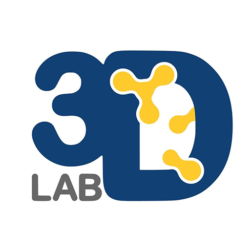The modern methods of obtaining the pore size distribution (PSD) of activated carbons involve, on the one hand, obtaining an experimental isotherm which can be N2 at 77 K, Ar at 87 K or CO2 at 273 K and on the other hand the use of a collection of simulated isotherms (kernel) by methods of statistical mechanics (non quantum DFT or Monte Carlo).
While the experimental isotherm has its methods of obtaining properly standardized, different kernels of simulated isotherms can be used according to specific characterization objectives.
In order to expand the existing kernels, our laboratory offers the following specialized kernels appropriated to research:
1- Reax kernel – this is a Monte Carlo heterogeneous kernel of the same class as the QSDFT or 2D-NLDFT kernels available in commercial analysis equipment. While commercial kernels are implicit (they do not discriminate the origin of heterogeneity) the reax kernel is explicit, having been obtained from reactive molecular dynamics of a graphene surface, mimicking the oxidative etching of the production process of activated carbons. The kernel accurately reproduces experimental isotherms from the following standard surfaces: BP280, LMA10 and Sterling 1500. This kernel should be used to check PSD details in samples with predominant pores up to 52 Å. We currently accept N2 at 77K isotherms. (ref. Lucena et al., Microporous and Mesoporous Materials, 304 2020, 109061).
2- Multikernel – This is a state of art Monte Carlo kernel that can be used in carbon surfaces, graphene and activated carbon. Carbonaceous materials do not have only one class of heterogeneity, we believe that multikernels better capture the several characteristics of these materials. The multikernel is composed of 3 kernels, a homogeneous, a heterogeneous (Reax kernel) and a low energy interaction kernel (parallel kernel). This set covers a wide range of gas-solid interaction energies producing superior results better than any other existing kernel. With the multikernel it is possible to extract a heterogeneity index from the sample, important for activated carbons in high performance applications such as supercapacitors. We currently accept N2 at 77K isotherms. (ref. Lucena et al., Carbon, 119, 2017, 378 – 385).
3- Representative pores kernel – In many applications pore size analysis needs to be simplified. This kernel reduces the complexity of a full PSD while maintaining the significant elements of the structure-property relationship. This kernel has a limited number of pores (7.0, 8.9, 18.5, and 27.9 Å) named representative pores. If you need to perform complex mixture calculation or test many different carbons for a specific application, all based in molecular simulation, this kernel reduces the time and computational efforts. Also, if you need a prompt description of your carbon, easy to understand and to compare different samples, this is the recommended kernel. We currently accept N2 at 77 K isotherms. (ref. Lucena et al, Frontiers, submitted).
Send your experimental isotherm
Click here to see instructions.

